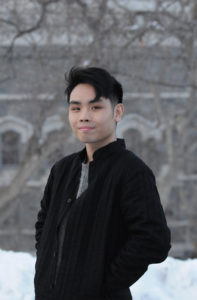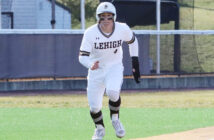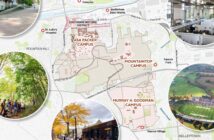
Minh Le
Each and every black and white photograph of Robert Doisneau displayed in the Dubois Gallery boasts astonishing cinematic sensibility. They encapsulate the Parisian life, with both its charm and chaos, in the aftermath of World War II and, stylistically, a unique period when the sea-changes of the digital revolution over the past decade have not detained the magic of spontaneity in photography.
Perhaps his most famous picture, titled La Baiser de L’Hotel de Ville, bespeaks most clearly Doisneau’s sensitivity to romance and beauty. In the midst of commoners whose silhouettes grows faint and wane into the air, two lovers strides down the block, arm in arm, lips on lips. It is a suspended moment among the blurry haste of everyday life — a kiss whose flare and intimacy are only sensed by the lovers and the invisibility of the photographer through his lens. It could be love, or it could be just a kiss, and the magic is in not knowing.
By juxtaposition, the exhibition also accentuates a new breath of life coming through Paris after the war — one that both honors traditions and celebrates the new generation, gleaming in joy and freedom.
A group of middle-aged men gathers for a game of billiards in a photograph titled La Poule au Gibier. Everything from their intense gaze, their straight stance to their suits and ties, some topped with little French caps, conveys a sense of dignity and composure. At a second glance, you find in the corner a man looking straight into Doisneau’s lens, and you can tell he was nervous. That’s the thing about Doisneau’s photographs: They render the scene, yes, but they also capture the heart of the matter that is the emotions, flirting with the way we see his photographs anew every time we come across them.
Diversity, however, is perfectly captured on film in Le Petit Balcon, where many personalities reside under one roof that is the city of lights. The ambiance transpires through a laughter shared by a man and a woman of different ethnicities. It weaves its way even into an elder’s snarky gaze at a young lady — in a tight-fitting number and lace-up platforms — with her forearm resting on the lap of another elder who, in contrast, titters at the gesture. Again, the photographer told a story within a story with moments that is going to vanish in the blink of an eye if we just drift through life.
My mind begins to wander as I left the exhibition. The end of the semester is coming, which brings with it the burden of taxing exams, and four semesters in, I realize that thinking about the past is a way of thinking about the future. In hindsight, these challenges will probably just be a drop in the ocean of people we’ll meet, memories we’ll create and accomplishments we’ll achieve.
In a time of pressure, just take a minute to react to the life around you: Instead of thinking that you need another cup of coffee, take in the air you’re breathing, listen to the sound your pencil makes as it swept across the paper and be present as you move through the here and now. I promise it will make you feel more alive than caffeine can ever does.
And if you ever need a break to take yourself to another place and time, go to the fourth floor of Maginnes Hall and see Robert Doisneau: Paris After the War. Unfolding across from the towering planes of glass, Doisneau’s photographs bask in the sunlight, savoring their last days on campus. You will likely find yourself to be the only one there.
So imagine; imagine away.





Comment policy
Comments posted to The Brown and White website are reviewed by a moderator before being approved. Incendiary speech or harassing language, including comments targeted at individuals, may be deemed unacceptable and not published. Spam and other soliciting will also be declined.
The Brown and White also reserves the right to not publish entirely anonymous comments.